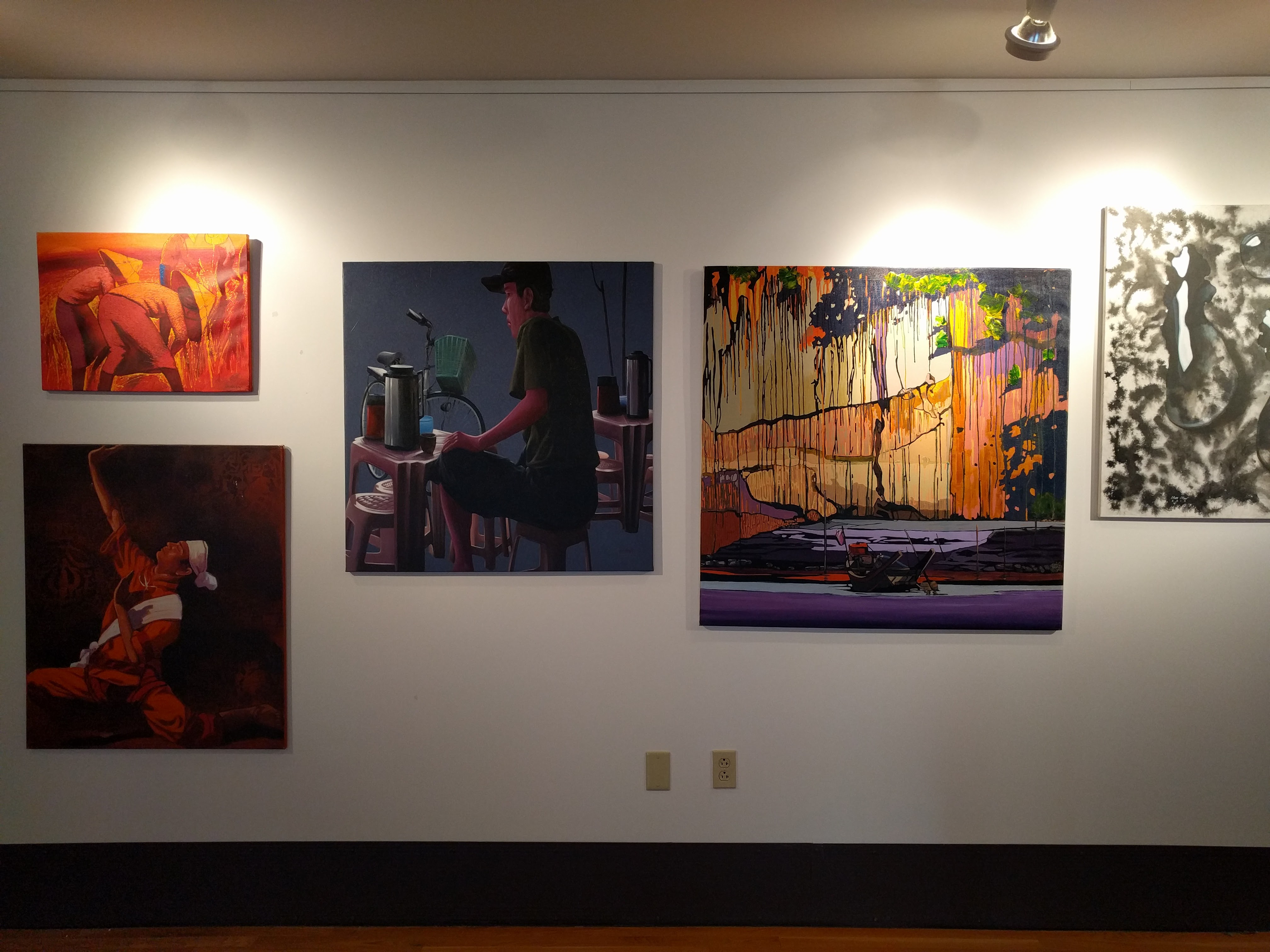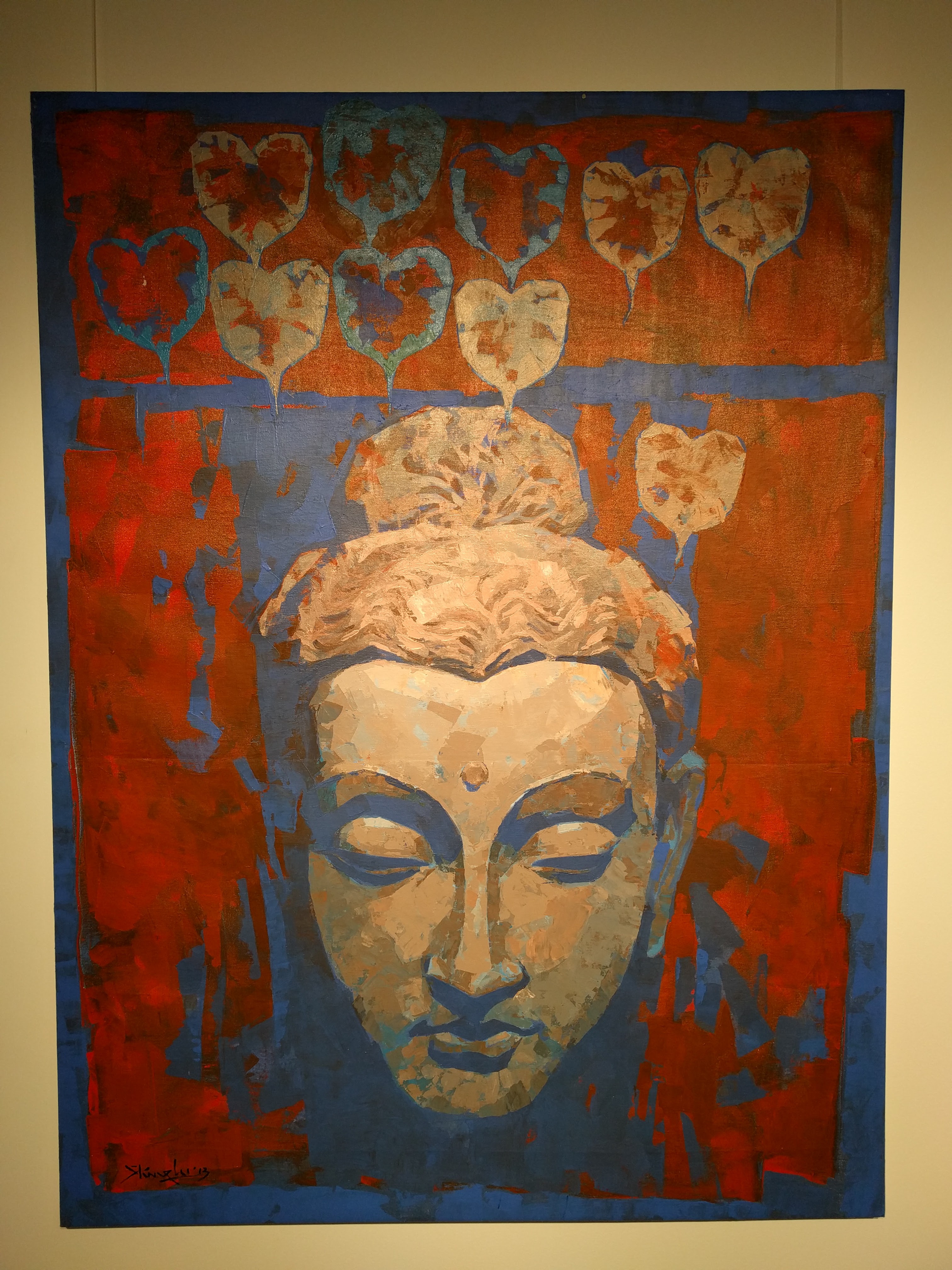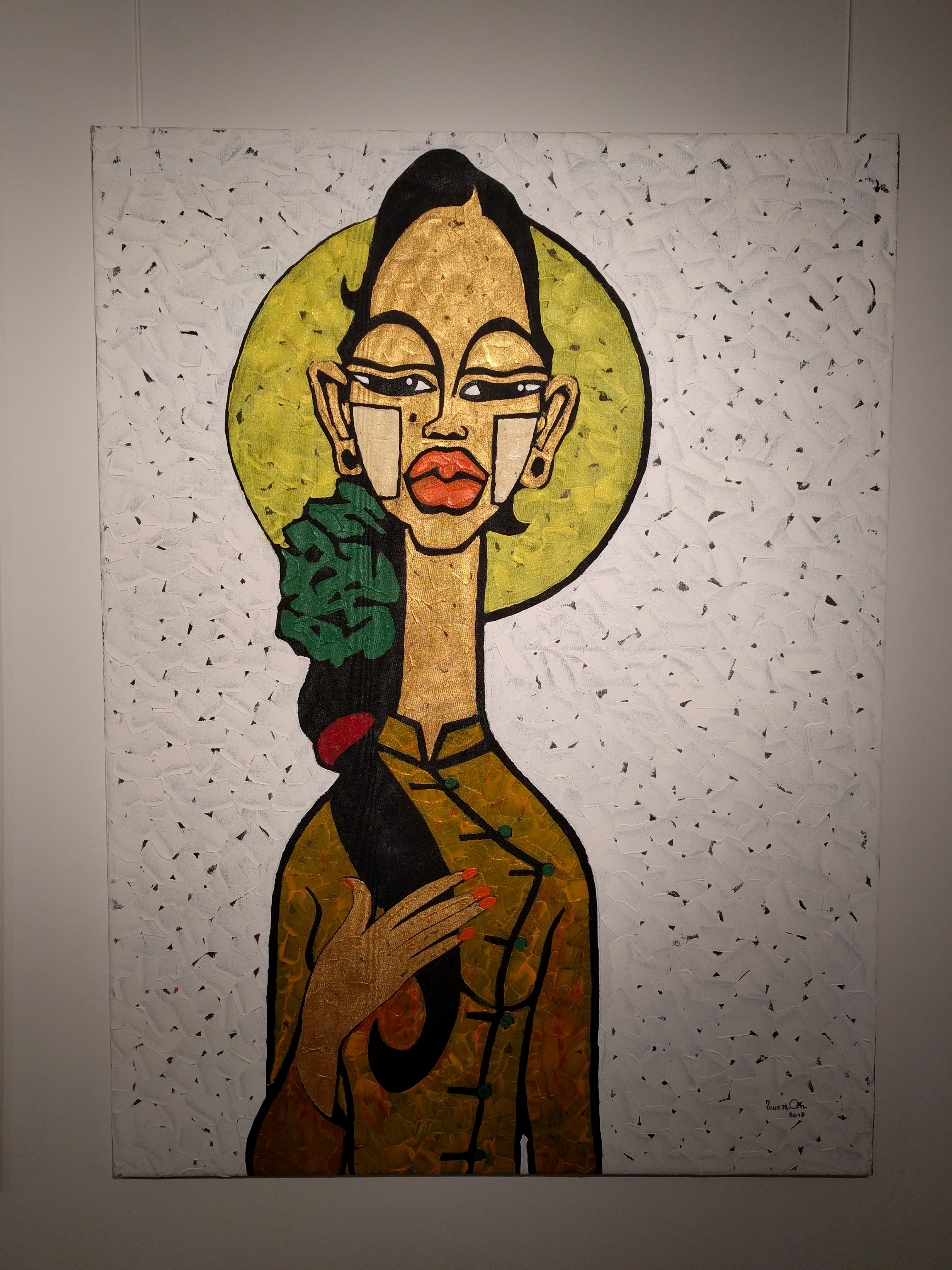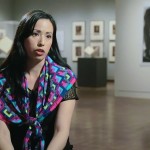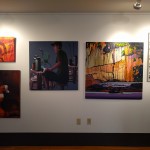by Eugene Lim
Looking up at Zwe Mon’s The Gaze (2013), it’s hard not to be struck by the strange proportions of its subject: a heavy-lidded woman stretched vertically across the canvas, glowering. She’s off-center; the viewer searches for balance, travelling up an elongated torso and returning to her face. But her eyes are downcast. She barely meets our gaze.
The painting is emblematic of the rest of the exhibition, titled Altered State: Painting Myanmar in a Time of Transition. Curated and presented by Ian Holliday (Vice-President and Pro-Vice-Chancellor, University of Hong Kong) from the Thukhuma Collection, it features 35 paintings by 35 Myanmar artists. All were painted during the transition period of 2011, when a military-backed civilian government replaced oppressive rule by military junta, and the country once famous for its seclusion re-entered the world stage. None of the portraits look the viewer in the eyes, yet it’s impossible to resist their pensive expressions. They recall the tentative spark of recognition in someone viewing a long-forgotten face.
None of these paintings would have existed even a couple of years ago. Colors such as white, red, or black were discouraged, and political paintings like Aung Soe Min’s Crisis of Buddhism (2013) or Min Zaw’s Ordinary People (2012) would have been banned outright. Professor Holliday notes that this is why abstraction is missing from the collection; prolonged isolation and government suspicion of hidden messages have led Myanmar artists to avoid such techniques.
Nevertheless, the exhibition resists exploiting the country’s history of political repression or dwelling on gloomy context. The paintings burst with color and life, portraying everything from the everyday scenes of Yangon Lives (Su Eaindra, 2015) to dramatic ceremonies in Novitiation Ceremony (Satt Aung, 2013). These works celebrate a vibrant, up-and-coming society with a rich history of anti-colonial struggle. Above all, there is a sense of movement.
Phyu Hnin Lwin (SM ’18), who worked on the exhibition, hopes that the exhibition will “will trigger fresh thinking about Myanmar’s transition to democracy, away from aged perspectives .” Indeed, the show re-introduces a misunderstood nation and brings the viewer face to face with the art of its people. For now, the painted figures—much like Myanmar itself—appear to reject the foreigner’s gaze. Yet perhaps at some point, and on more equitable footing, we will look them in the eyes.
Altered State: Painting Myanmar in a Time of Transition will be held at Maya’s Room, Silliman College, from February 24-29. The exhibition is jointly hosted by the Alliance for Southeast Asian Students and the Council on Southeast Asia Studies.
